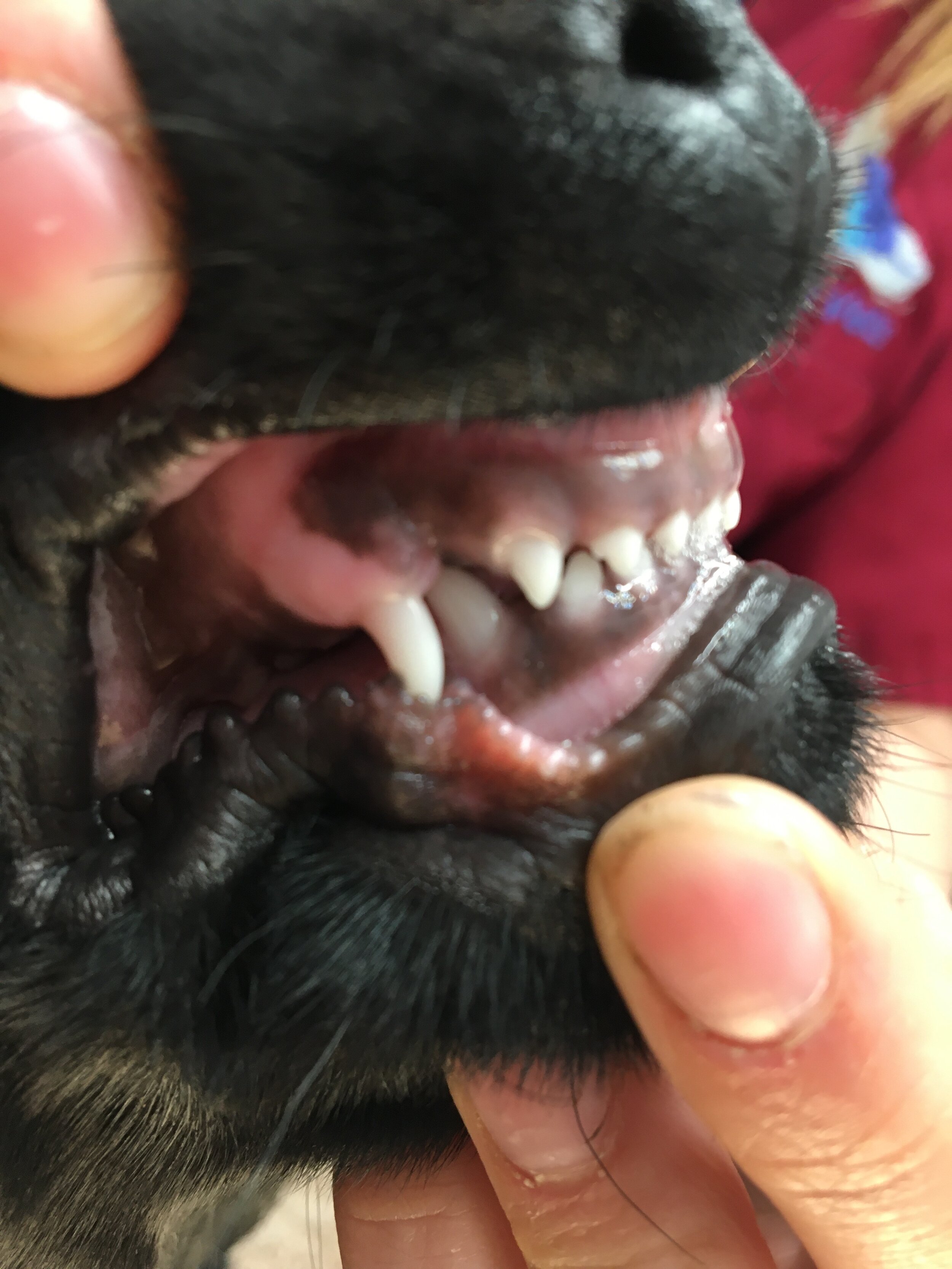Lingually Displaced Canines
16th July 2021 | Posted by The Team at Coquet Vets
Photo: Winsker from Pixabay, 2021
Lingually Displaced Deciduous Canines (LDDC) is a genetic condition where a dog’s lower deciduous canines (baby teeth) are growing into the hard palate (top of the mouth). The teeth are growing too far towards the tongue (lingually).
Puppies with some degrees of LDDC cannot close their mouths without these teeth contacting the soft tissues of the upper hard palate and this can cause discomfort.
Reasons to remove these teeth:
Teeth growing into the hard palate can be painful for the puppy
If these teeth are removed at a young age it can improve the chances of the permanent (adult) canine teeth erupting in the correct pathway
To stop these teeth affecting the normal growth of the jaws
It is important not to delay treatment of deciduous canines, as the window of opportunity is only a matter of a few weeks until the permanent canines erupt at 22 to 26 weeks of age. If the adult teeth erupt lingually their contact, and therefore damage to the soft tissues, can be far more significant. Treatment of lingually displaced adult canines involve endodontic work, and generally this is done by a dental specialist (with specialist costs!).
We offer free puppy checks. This is where one of our vets will check for LDDC when they examine your puppy, as well as give a full health exam and advice.
Our vet Emily has a keen interest in dental work and has attended dentistry courses in Sweden. Over the past year we have had at least one puppy a week needing their deciduous canines extracted due to this condition.



Options if adult teeth grow lingually are:
Partial Crown Amputation
This is the favoured option and involves reducing the height of the lower canines to that of the adjacent incisors. This is a sterile procedure to reduce the height of the canine crown that exposes the pulp. This is a very delicate procedure and carries high success rate.
The intention of the procedure is to keep the pulp alive and allow the shortened canines to develop normally and contribute to the strength of the jaws. In order to monitor this process of maturation, the teeth need to be radiographed at four to six months post-op. At this current time, Coquet Vets cannot perform this procedure, but can refer to a vet that does (Dental Vets, Scotland).
Surgical Extraction
This is the complete removal of the canine(s) in question. Surgical extraction of the canine may seem attractive, as the problem is immediately dealt with, without the uncertainties of orthodontics and the post-op check that is part of any crown amputation procedure. However, the loss of the tooth can cause weakness of the jaw(s).
This is an inherited condition - an autosomal recessive mutation. Both parents may look normal but carry recessive genes for the condition. When this genetic information is passed onto the litter, approximately one pup in four will appear abnormal, although all will carry the recessive genes for the condition.
If this condition appears in the litter, the most responsible course of action is not to breed from the parents again. All the normal looking pups also carry the recessive genes, so they too should be neutered to prevent the problem passing back into the gene pool.
If you want to arrange a free of charge dental check up for your pet, or this article has raised any concerns, call us today on 01665 252 250.
NOTE: Since this article was published in July 2021, the term Lingually Displaced Deciduous Canines (LDDC), is now referred to as Linguoversion of the Mandibular Canines (LMC) to describe this condition. (Article update: 24/05/23)



